Introduction to Permaculture with Matt Powers
This post may contain affiliate links. Read my full disclosure here.
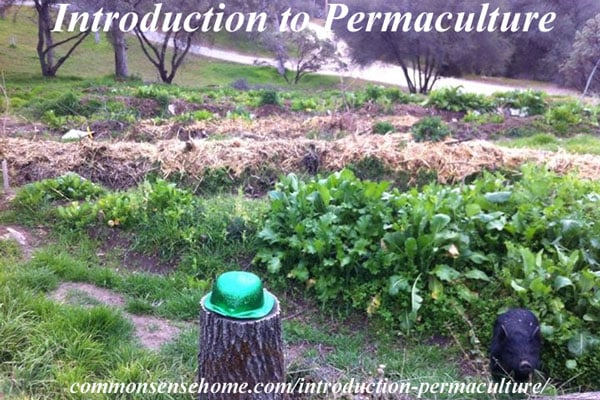
Have you heard of Permaculture?
I hadn’t until I really began exploring organic gardening and saw a divide between those that were just changing their inputs to organic and those really gardening naturally. I was on a mission to find clean and healthy food for my wife, a 3 time cancer survivor. I was not going to be satisfied with good or better; I was going to find what was best. That’s what permaculture is for a gardener – it’s the best way to garden, but it’s also a whole lot more than gardening. In fact, gardening may end up being just a small part of it.
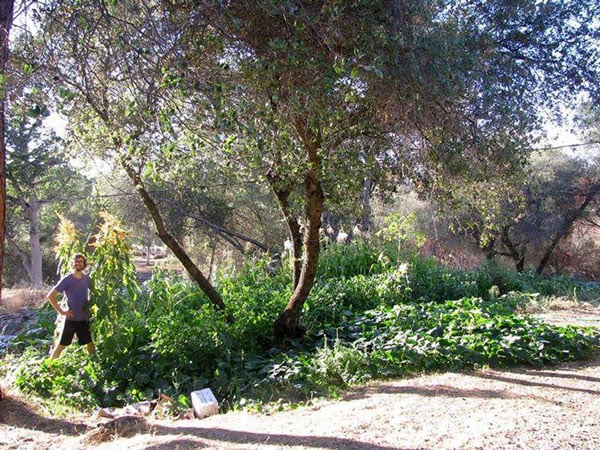
What is permaculture?
Permaculture began simply as permanent agriculture, an ethical, sustainable food system, but it was expanded to be an ethical design science. It focuses on using energy in the ways that nature already does but by design to capture and utilize all energy including potential energy. Permaculture works with, benefits and extends the patterns of nature.
Sustainable agriculture is not new. Many cultures have had sustainable elements and understanding. Every person alive today has had ancestors that have lived harmoniously enough to survive in nature. These ancestors had no access to the scientific research, modern technology and the plant and animal diversity we have today. With our current understanding, we can create sustainable systems to enjoyably provide for all our needs locally and globally.

Improving Poor Soil on Our Family Farm with Permaculture
On our farm, permaculture has been no less than a miracle. Our decomposed granite, deer and ground squirrels makes gardening a fool’s venture in many eyes in our area. People now drive hours to come to my farm to stick their arms up to their shoulders in loam that didn’t exist 6 months ago.
Let me give you some examples of the permaculture tools I’ve been using on our farm.

Compost Tea Stimulates Healthy Soil Life
Healthy soils start with healthy soil life. You can breed healthy soil microorganisms with a compost tea brewer. A compost tea brewer aerates water vigorously with a micro-filter bag of compost soaking in it in order to detach and then breed the organisms. Commonly a sugar source like molasses is used for rapid growth. Water down the tea 1 parts tea to 4 parts water. It will prevent transplant shock, invigorate soils and inoculate soils with critical soil microorganisms. I use it seasonally and with all my transplants, rooting cuttings and new swales.
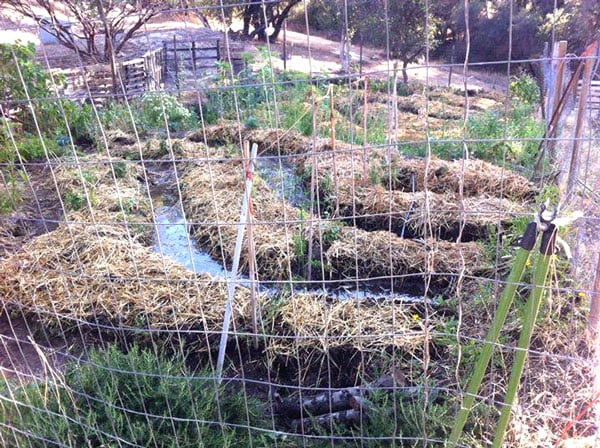
Swales Direct Water Where it’s Needed and Prevent Erosion
I’ve been putting in swales since the drought and I’ve seen a complete change in our gardens. A swale is a ditch that is on contour, so that it absorbs water passively into the landscape. It can be made by hand, with a shovel, or with a large excavator. The scale does not change the function of water absorption. Using a tool to find level and stakes to mark the contour line, the ground can be removed from the uphill side and placed on the downhill side of that line. The back cut of the swale path should be at the same angle as the slope after the swale mound.

We face serious drought often enough in Central Valley California that not having swales is irresponsible. Since I’ve installed them I’ve seen a complete change in the ecology of our land.
Sheet Mulching to Build Deep Topsoil
Sheet Mulching is a soil building technique where cardboard, newspapers, paper, manure, and mulch are layered to build soil quickly. It is an imitation of the forest floor. Nature creates a thick mulch layer in the forest. That thick layer has all the potential of a new forest or meadow in it at all times.
Would you like to save this?
- Soil Amendments if necessary
- 2.5 cm (1”) manure
- 1-2 cm (.25-.5”) newspaper or cardboard
- 2.5 – 5 cm (1-2“) manure, preferably with no seeds
- 15 – 25 cm (6-10”) of organic mulch like straw, other dried carbon-rich remains of plants and even non-allelopathic tree mulch
- 2.5 – 5 cm (1-2”) compost
- Scatter seedless mulch lightly atop to shade growing seeds, hold them in place while watering & hide them from predators.
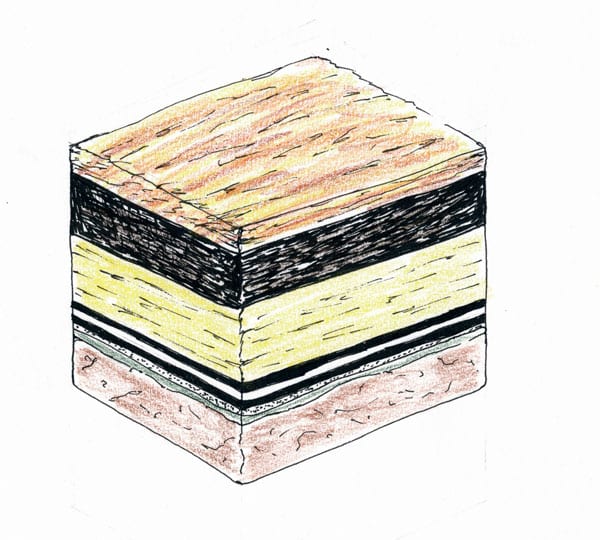
Our Farm Today – The Results We’ve Seen With Permaculture
Recently we setup our own Worm Juice compost setup to complement our Compost Tea brewer. Between the two of them, we should be able to avoid transplant shock and feed my rooting cuttings. I keep adding in small swales and adding details and reshaping things, but mostly we are “at size” at 2 acres despite there being plenty more land.
I built a farmyard for the chickens to focus them on building soil and to keep them closer to home. The goats share the yard with them, so I can pull the soiled bedding out, make a pile, mix in layers of manure and compost, and cover it lightly with grain or scratch. This way I can have the chickens process the piles into fine mulch, near compost, that you can compost further into fine soil amendment or throw it onto the soil directly in the off season or on weeds. It has been a soil factory so far! I also have a chicken tractor, an open-bottomed mobile chicken pen that removes weeds, disturbs the soil and prepares the soil for planting. I also have a pig tractor, but he is soon to be bacon and lard. American guinea hogs eat grass, small lizards, small snakes, rodents, weeds and grasses; they provide a service and then quickly are ready to be meat, cured meat, sausage, or lard.
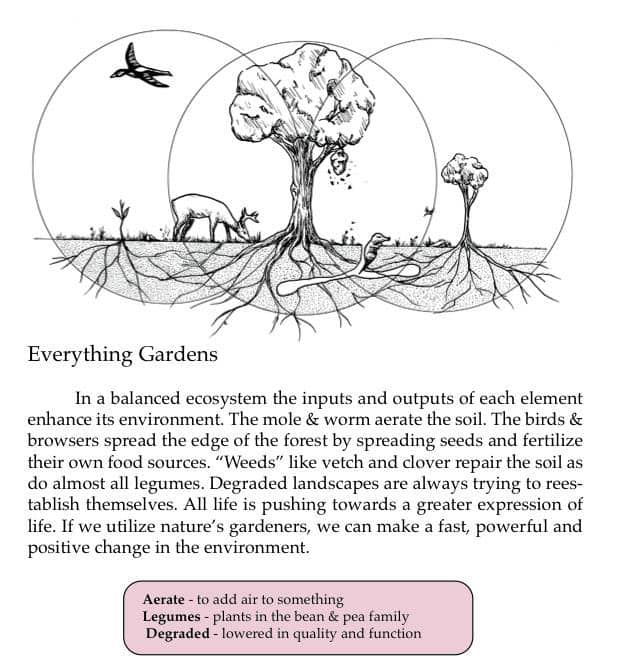
Successes so far: The BRIX on our tomatoes is at (7-8) versus Store tomatoes at (5-5.5) and tomatoes from an Organic local farm at (5.5-6). This was really exciting since it was only the first season of using compost tea.
Not using fences! In our area using a strong and high fence is the only way to grow anything in a garden to protect it from deer… unless you hide your food in a polyculture of food. The swales also seem to frighten them out – the flatness is odd perhaps.
Our hardpan and decomposed granite is being transformed into chocolate loam in only a few months. People are driving to come and see it! It took a blanket of cowpea seeds and a swale, but it was worth it. It’s better than my original garden soil already! I will always use nitrogen fixing plants in all my plans from now on: they feed the soil & the plants. I’m ordering Siberian pea shrub, autumn olive & bayberry plants with a friend tonight in addition to my annual legumes, silk tree/mimosa and honey locust plantings. I hope to transplant as many fast growing fruit trees like fig and mulberry in between the legume trees I’ll growing this spring, but I can only move as fast as my budget. I plan on going off grid food-wise as much as possible this coming spring. Potatoes, carrots, onions & grains are the key foods that I need to grow in quantity and then store in quantity.
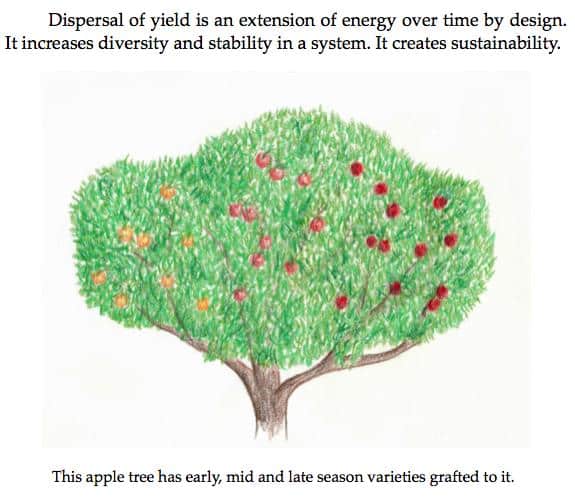
Right now we get 20 eggs a day and have about 30 immature birds still out of 50 or so. Almost all the roosters go out to tractor. Until recently we were getting two mason jars of milk a day, but our milking doe is taking a break to have kids. This spring we will have plenty of milk, eggs and pork! We only need to cultivate our own sweetener, and we will be on easy street. We also have mushroom-plugged logs hiding in shady corners, a horse creating manure, angora goats making fleece, 50-60 lbs of garden seed, and a front yard filled with potatoes growing in tubs.

While we don’t have the perennial variety we need to have a large stable food forest yet, we have focused on fast return crops like dozens of red and gold raspberries, blackberries, loganberries, 4 kinds of blueberries, 7 kinds of strawberries, rhubarb, asparagus, walking onion & other perennials. Last year our annual crop was better than any year prior despite our late start; this next year I am going to focus more on broad acre crops to stream line and prioritize the gardens according to zones (how often you visit each area in permaculture). The intensive crops will be closer to home. I still plan on planting over 200 varieties, but I’m likely to start most indoors under light and transplant them instead of Fukuoka planting them as I did last year. I got plenty of what he grew but not much else. I plan on plugging them into the system by hand for an intensive polyculture that will thrive.

The Permaculture Student Series
When I finished my permaculture design course with Geoff Lawton, the first thing I looked for was curriculum designed for my two young sons, who are homeschooled. I couldn’t find anything for young students, only for teachers with school gardens. I wanted the PDC experience to be a normal part of my children’s education. I realized that no one else was doing it, and I was qualified (MA in education, certification in Permaculture and training as a writer). I wasn’t the only one looking for it, so I felt compelled. I’m sourcing the experts as much as I can to review the work before the final print so I can make it perfect. I’ve already shared samples with numerous leaders in the permaculture world with only positive feedback – Geoff Lawton, Paul Wheaton, Diego Footer, Elaine Ingham and Diana Leafe Christian. My hope is that this becomes the standard for all public and home school programs, linking high school graduates into the college programs at their highest potential.
Imagine the designs this generation will come up with. Imagine the exponential change for good they will innovate.
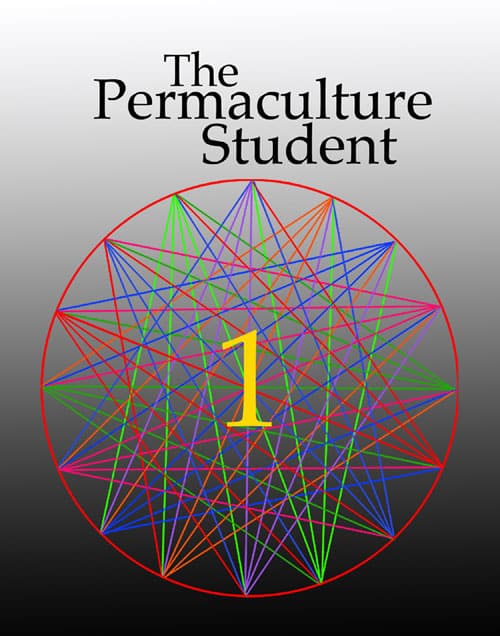
Check out our Kickstarter, share it with your friends and support it if you can. Thank you!
You may also enjoy:

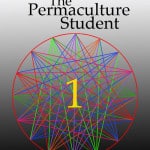
Hey Y’all,
Great stuff in general. I have a specific question. I too live in the land of decomposed granite, squirrels and deer (and bear, bobcats and mountain lions) down here in Idyllwild CA. My wife and I just bought a house and land where we will be nurturing a permaculture site focused on helping little people learn nature-connection and Earth-care. Soil building is my thing so I am comfortable deal with building soil around DG. I can imagine being able to deter the deer with chaparral whitethorn and other uncomfortable to deer border plants. My biggest concern are the squirrels. They eat everybody’s everything up here. I’ve observed that my most successfully gardening neighbor does everything either in greenhouses or cages. So… how do you deal with squirrels?
Much Love,
–Peter
I don’t think Matt is checking comments on this post anymore as he has moved on to other ventures, but I know that one common theme in permaculture is that when a specific pest gets overpopulated, it means that there’s not enough of whatever would normally keep that pest in balance.
For instance (I can’t remember who may have originally said these), a grasshopper problem was a “lack of turkeys or other birds that eat grasshoppers”, and a slug problem was a lack of ducks problem.
I don’t know if it would be more practical for you to allow/encourage wild predators, or to add domesticated cats or dogs that would hunt the squirrels to keep the population down, but those are options I would consider in addition to mechanically protecting specific plantings.
I’m curious, where in Northern California is your farm (perhaps you mentioned it:)? We live in El Dorado County and your soil conditions sound similar, along with your deer infestation. I’m fascinated by permaculture and ready to start digging in but I’d love to see a permaculture farm and visualize what some of this means. I’ve been researching for over a year and still have only a pile of carboard to show for it. I don’t want to mess it up at the early phase of development and become discouraged tearing it out and reinstalling it. I’m somewhat of a beginner as it is but I’m a long time “prepper” and this was the logical next step for us. We also homeschool and working a farm has more benefit academically than most textbooks since the biology and scientific portions are tangibly incorporated into life skills too. I’d love to point pick your brain and even see your hearts work if you’re close by.
Matt and his family just recently moved to Missouri to join the Baker Creek Heirloom Seeds team, but maybe he can suggest someone else for you to visit in the area.
This is incredible! YOU are incredible. Thank you so much for sharing your experience. It is making my wheel turn looking for ways to add elements of this to our household. Thank you.
Welcome, Tara. What a nice comment to log on to this morning. Permaculture is absolutely fascinating, and the results from people using it around the world are nothing short of amazing.